 |
Biography of Benjamin Finesmith

We would like to thank Libby
Stortz, daughter of Mr. Benjamin Finesmith, for this biography and photos
of her father.
BIOGRAPHY OF BENJAMIN FINESMITH, MAY 22, 1917-NOV. 25, 1998
PHOTOGRAPHS OF ORDREUF CONCENTRATION CAMP &ACTIVITIES TO HELP SURVIVORS GET OUT OF GERMANY
(pictures generally do not correspond with specific text)
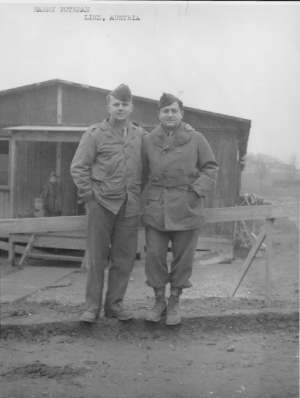
Benjamin Finesmith was born in Wilmington Delaware, to his orthodox, Jewish parents, Sarah and Louis Finesmith. Both his parents were immigrants from Warsaw, Poland. He was second youngest of 5 children, the oldest of whom was born in Poland. Sarah's maiden name was Wolovchik (sp?). He grew up primarily in NYC. His father had a pushcart, selling fish and poultry. His mother sewed leather gloves. Benjamin's oldest brother Joseph, changed his last name to Finsmith early in his professional career, so that he could get a job with RCA records, during a period when they did not hire Jews. He eventually became an executive at RCA.
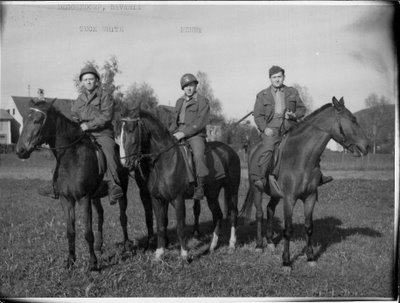
Benjamin married Miriam Calica in 1937. She and the rest of her family were immigrants from Russia, having "walked" out/fled by hiding over a two year period, going from the area of Kiev to a port in Rumania where they took a boat to New York in 1919. Ben worked for Mimi's father for his adult working life, as a glazier in a window making factory. As a teenager, he worked with a pharmacist including treating minor ailments and ran the projector at a movie theatre. He and Mimi had a children's portraiture business as photographers for over 10 years, using the facilities of a friend who had a storefront photography business. It was always a part time vocation but began before the war and continued after.

They had two children, Jared (1942) and Libby (1951). His youngest brother Max, served in the air force at the same time that Benjamin was in the army. Max was shot down on his first run and remained in a concentration camp/POW camp for the duration of the war and was slated for extermination, as a Jewish POW, when he was liberated. As far as my family knows, we lost at least 10 identified members of our family in the holocaust and had one surviving member, Avram, who lived in Montreal after the war with a couple he survived with in Auschwitz.

After being drafted and going through boot camp, Benjamin was placed in his unit, the Company C, 1st platoon, 2nd squad of the 314th Engineering Battalion. He talked to his superiors about his background in photography and they made him the photographer for his unit. He would commandeer photography equipment from the local burgermeisters as they proceeded on their route. Being the only Jew in his battalion and fluent in Yiddish, he was enlisted as their translator.
They arrived in Europe in January 1945, entered combat on March 12, 1945 and liberated Ohrdruf concentration camp on April 6th. During or immediately after the liberation of Ohrdruf, he took a number of "proof" pictures of the atrocities and conditions of the camp. He took few as he was too emotionally overwhelmed to continue. His photographs include inmate barracks; 3 photographs of groups of emaciated, slaughtered inmates; a Polish slave survivor acting as guide; a Russian slave survivor eating "C" rations; the entryway of the SS compound; a group of 4 survivors in the entry of building #2 at the camp; crematoria at Dachau; entryway at Dachau, after the liberation when it was already set aside as a memorial; Dachau torture manikins; entrance to the Jewish Lagar at Deggendorf; entrance to Ohrdruf; a photo of non-specific buildings at Ohrdruf; a photo of Burger Beau Heller where Hitler started out, in Munich. There is also a photograph of freed British POW taken at Zwickau Germany right after their liberation on April 18, 1945.
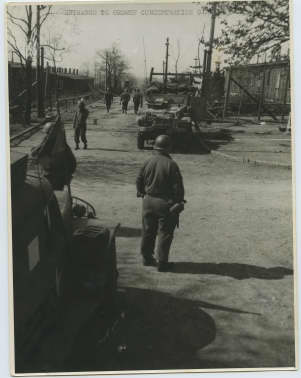
After the liberation of Ohrdruf, without permission, he took letters from survivors asking for help from family living elsewhere. He smuggled these out, sending them to family members for the purpose of getting their surviving family out of the Displaced Persons camps. He never told any of us how he did it. However, there were 3 people in Gall, Switzerland for whom a survivor had given him an address. After the surrender, when he was on leave he went to see these people, whom we think may have helped him in passing the letters of survivors on. He made reference to that. We have 2 photographs of this threesome. They were Mr. Kahn and Mr. and Mrs. Reichenbach.

In addition, and also on his own, my father wrote an appeal letter, which he mimeographed and sent to everyone he knew, describing the circumstances of Jewish survivors in the DP camp at Bindermichael and asking people to send supplies to help them. We don't know how or where he was able to have use of the mimeograph machine but at that point there was a Jewish chaplain with the 83rd Division, with whom his Division had been combined [editor: the divisions were not combined but many 89th veterans were transferred to the 83rd immediately after the war) and he exhorted people to send provisions quickly, addressed to "The Jewish Chaplain" whom he said would only be able to help as long as his Division was there, perhaps a month or two.
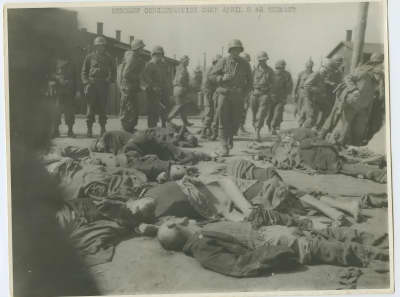
It is conceivable that this chaplain was involved in this project with my father. As far as we know, he was the only other Jew my father had contact with in the army and he is the only person who may have known or assisted my father in his efforts. We have a photograph of "Herb" who we believe is this chaplain. He also assisted my father in finding his brother after the surrender.
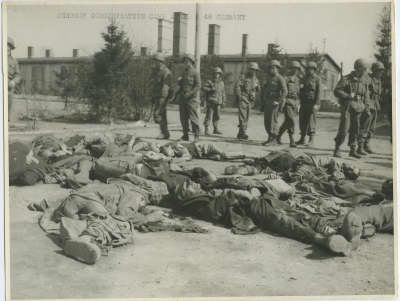
In 1991 my father gave copies of some or all (unknown to me), of the above mentioned photos to the USHMM and an oral history video which he made for the Miami Holocaust Museum was also passed on to the USHMM. Included here are his negatives, originals and paperwork reflecting his activity to help survivors. I also gave the remaining original photographs of Ordreuf to the Washington State Holocaust Education Center in December 2009.
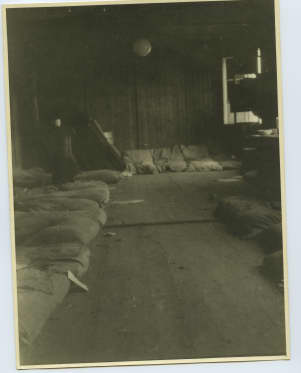
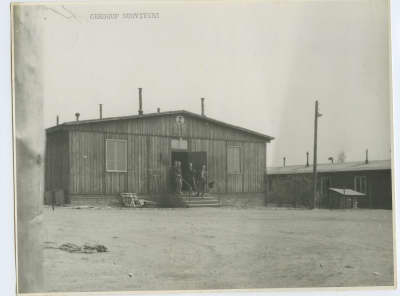
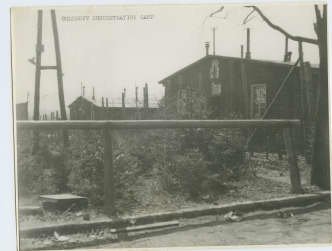

More photgraphs >>
|
 |

